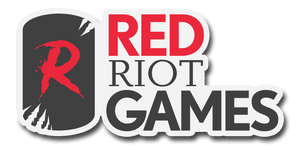Critical Mass in Deck Building and Card Availability
By Dimos. K
I suppose I should start this article with some acknowledgement of the recent bans. My briefest opinion is that overall, I am a fan. I don’t think that Plunder run and Ball Lightning were breaking the game (although they were icing several decks out of the meta), but I didn’t like their design. However, I am glad of the signals that this sends. LSS acknowledged the strength of unconditional Go Again, which is something that can definitely achieve critical mass to create a deck’s identity. We’ll get into that later. From these bans, I’m glad that LSS is pulling back on cards that push the bounds of strength. Cards that effect the entire turn or combat chain in multiple meaningful ways are incredibly strong, as are cards that cost zero resources. Once there is a critical mass of these cards, an entire deck can be built around these cards. Obviously, zero-cost Briar sprung up as a result of having enough of these hyper-efficient zero-cost cards. Scar for a Scar, Ravenous Rabble, Ball Lightning, Entwine Lightning, Exude Confidence and more are all complemented extremely well by zero-cost cards buff them such as Nimblism, Weave Lightning, Lightning Press, and Plunder Run. All of those cards come in Red, Yellow, and Blue, allowing more than three copies in each deck. Once there is a critical mass of a certain card type, powerful decks will start to spring up from those cards.
Every deck requires a critical mass of its preferred cards to be good and achieve its goal. Otherwise, most of your deck is disconnected Generics and class cards. This was very apparent when the only set was Welcome to Rathe, where every deck had to run generic cards that were good but weren’t accomplishing anything in that specific deck. An example of this is Enlightened Strike in Bravo decks. An excellent card, but it does nothing for the deck that it can’t do better elsewhere. When Crucible of War gave each class more cards, a lot of classes saw viability in new ways. Dash became much stronger from the addition of non-Item Mech cards, which allowed her to Boost effectively while also having cards that block. Rhinar gained more quality six-attack, three-block, yellow Brute attacks in Crucible, and his performance skyrocketed as he had tools to address his core random mechanics. He saw nothing of the sort from Monarch, where all Brute cards had a null block value. To me, this is a sign that LSS thinks Rhinar has enough ideal resource cards in the form of yellow and blue six-power attacks that block. This extends to Levia as well. Deadwood Rumbler is a blue six-power attack that cannot block, and while Soul Harvest can block, it is limited to a single copy.
Ira was the big winner from Crucible of War, as she gained many efficient, cheap attacks to end her high-value Kodachi chains with. This led to her becoming dominant in blitz, as she didn’t need a cohesive, game-crushing Combo line like Katsu. She got by just from efficient standalone cards like Soulbead Strike and Flying Kick being added to existing cards like Fluster Fist and Pounding Gale. These efficient, cheap attacks, in a high enough density, created one of the most dominant decks of its time.
Now on to the class that everyone has an opinion on: Runeblade. In Crucible of War, Runeblade got a few very interesting tools. Meat and Greet, Mauvrion Skies, and Consuming Volition are all cards that add to a wide archetype of Runeblade. Viserai’s cards up to that point were mostly tall, focusing on building Runechants and throwing out single, powerful attacks like Arknight Ascendancy. The cards introduced in Crucible weren’t enough to make a viable deck on their own (believe me, I tried). But as time went on, and each new set trickled in a few more key cards, this build became more and more viable. Now, Viserai is seen as a key meta threat that everyone needs a plan against. A critical mass of cards can also manifest itself in unexpected ways. For example, any Runeblade (with or without a talent) can run more defense reactions in their deck than a talentless Guardian, which is supposed to be the core defensive class.
With this history lesson over, what happens going forward? I’m sure Everfest will have plenty of surprises and shake-ups. The cards that are currently sticking out to me right now, which are begging to hit some type of critical mass, are efficient Runeblade attacks. Very few classes have multiple “vanilla” attacks that tread the same ground. Usually only one or two cards in a class will have purely efficient damage, with other cards all having unique effects. Runeblade is the exception, due in large part to having been in so many sets. Aranic Crackle, Singeing Steelblade, and Vexing Malice are all different iterations of the same idea: take the base attack for a card, such as zero cost for four damage, and split it up over physical and arcane damage. I could definitely see something similar to what happened with Ira happen with these cards on a Runeblade, since these can be complimented by powerful Go Again cards like Meat and Greet. I also think that Bravo has hit a critical mass of utility cards. There is nothing that the deck cannot do at the moment. Tall, wide, defensive, aggressive, disruptive, he can do it all and adapt to any meta. It is important to note that he can usually only do one thing well at a time though, and that his 80 cards need to be specific and prepared for each meta he goes in to. Let’s see if Everfest introduces some (or many) key cards that allow other archetypes to hit critical mass for deck building.


